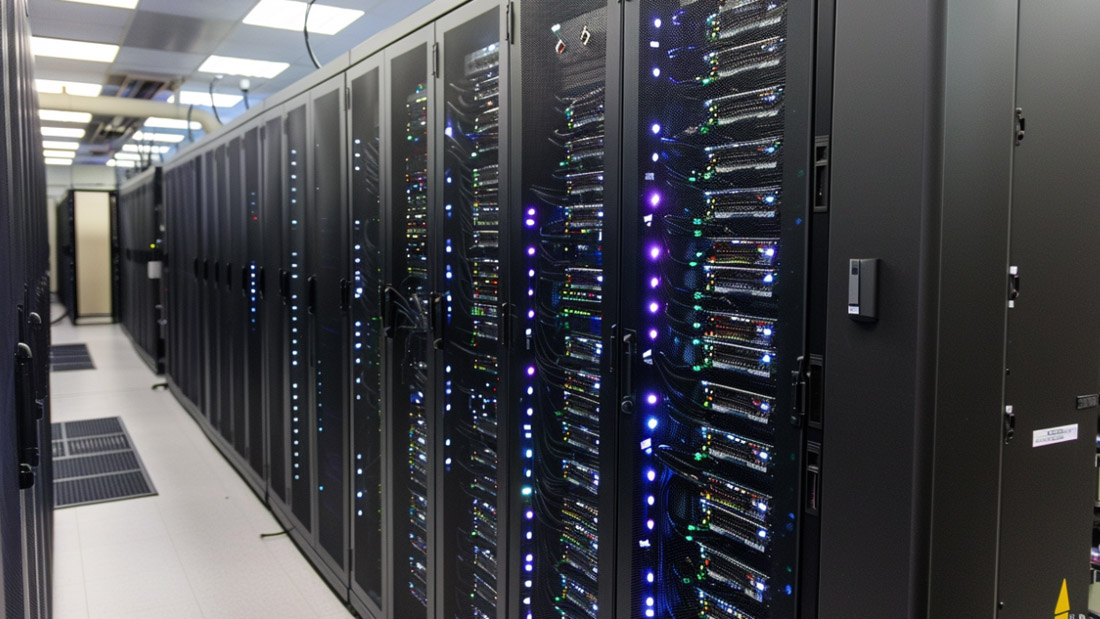What is Virtual Desktop Infrastructure (VDI)?
August 2, 2024
Go back to "News & Updates"

What is Virtual Desktop Infrastructure (VDI)?
Virtual Desktop Infrastructure (VDI) refers to the practice of hosting desktop environments on a centralized server. This setup allows users to access their desktops and applications from anywhere using any device with an internet connection. VDI technology is leveraged by businesses to create virtualized desktop images that users can access securely over a network.
In a VDI environment, a hypervisor segments servers into virtual machines, which host virtual desktops. Users can connect to these desktops through various devices such as PCs, tablets, or smartphones. There are two primary types of VDI:
Persistent VDI
Each user has their own desktop, which remains unchanged after a session ends. This type mirrors a traditional desktop experience, providing a personalized and consistent user environment.
Non-Persistent VDI
Users share a pool of identical desktops that revert to their original state after a session ends. This is ideal for tasks requiring temporary access without the need for personalization.
Benefits of Using VDI
- Enhanced Security: VDI improves security by centralizing data in a secure data center, reducing the risk of data breaches from lost or stolen devices.
- Flexibility and Remote Access: Users can access their desktops from any location, enabling remote work and improving flexibility.
- Cost Savings: VDI reduces hardware costs since the processing power is centralized, allowing the use of less powerful and less expensive endpoint devices.
- Simplified Management: IT departments can manage and update all desktops centrally, simplifying maintenance and updates.
- Business Continuity: In case of hardware failure or disasters, VDI ensures that users can quickly access their desktops from alternative devices without data loss.
Why Should You Use VDI?
Implementing Virtual Desktop Infrastructure (VDI) can significantly enhance your organization’s efficiency, security, and flexibility. Here are key reasons to consider using VDI:
- Improved Security: VDI centralizes data storage, ensuring sensitive information remains in a secure data center rather than on individual endpoint devices. This setup minimizes the risk of data breaches and unauthorized access.
- Enhanced Flexibility and Remote Access: VDI allows employees to access their work environments from any device, anywhere. This capability is particularly valuable for remote work, enabling employees to remain productive regardless of their location.
- Cost Efficiency: By utilizing VDI, businesses can extend the lifecycle of their existing hardware, as the performance demands are shifted to the server side. This results in significant cost savings on endpoint devices.
- Simplified IT Management: Managing a VDI environment is more straightforward than handling numerous physical desktops. IT teams can deploy updates, patches, and applications centrally, reducing the time and effort required for desktop management.
- Business Continuity and Disaster Recovery: VDI supports business continuity by allowing users to access their desktops from any device if their primary hardware fails. This resilience ensures minimal downtime and maintains productivity during hardware issues or disasters.
- Scalability: VDI solutions can be easily scaled to accommodate the growth of your business. Adding new users or increasing resources can be done quickly without significant investments in new hardware.
How to Start with VDI
Implementing VDI involves several key steps to ensure a smooth transition and effective setup:
- Assess Your Needs: Evaluate your organization’s requirements, including the number of users, types of applications, and specific use cases for VDI. This assessment helps in choosing the right VDI solution and infrastructure.
- Choose a VDI Solution: Select a VDI platform that aligns with your needs. Popular VDI solutions include VMware Horizon, Citrix Virtual Apps and Desktops, and Microsoft Azure Virtual Desktop.
- Plan the Infrastructure: Determine the necessary hardware and software components. This includes servers, storage, network infrastructure, and virtualization software. Ensure your existing infrastructure can support VDI or plan for upgrades if needed.
- Design the VDI Environment: Develop a detailed design for your VDI deployment. This should cover virtual desktop configurations, resource allocation, and network considerations to ensure optimal performance and user experience.
- Set Up the Infrastructure: Deploy the required hardware and install the VDI software. Configure the virtual machines, create desktop images, and set up user profiles.
- Test the Environment: Conduct thorough testing to identify and resolve any issues. Pilot the VDI solution with a small group of users to gather feedback and make necessary adjustments.
- Roll Out the Solution: Once testing is complete, gradually roll out the VDI solution to all users. Provide training and support to ensure a smooth transition and address any user concerns.
- Monitor and Maintain: Continuously monitor the VDI environment to ensure performance and security. Regularly update the software and hardware components, and provide ongoing support to users.
In summary, adopting VDI can lead to a more secure, efficient, and flexible IT environment, positioning your organization to better meet the demands of modern work practices.











